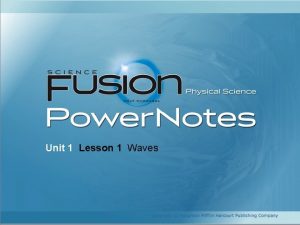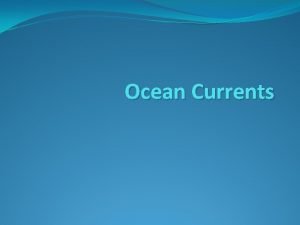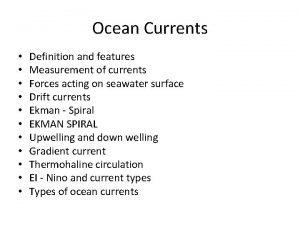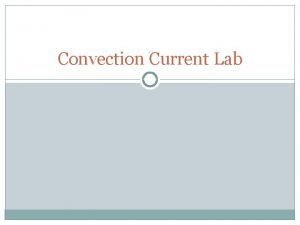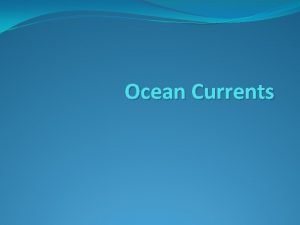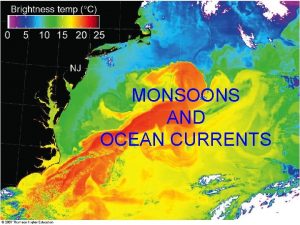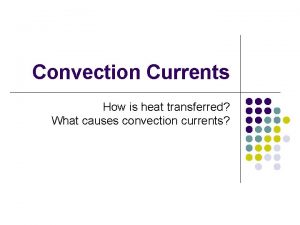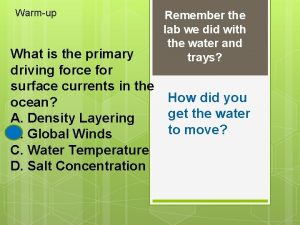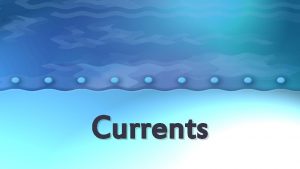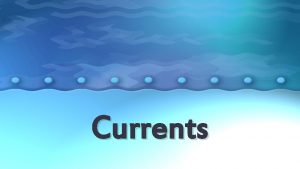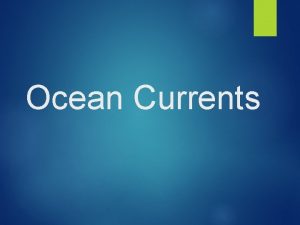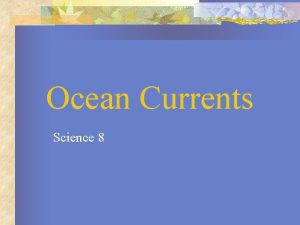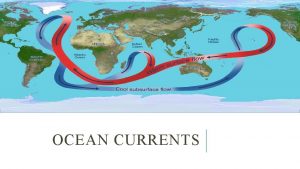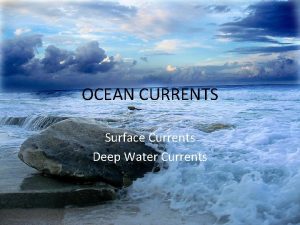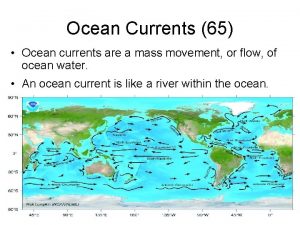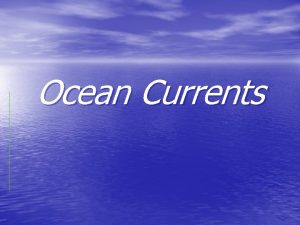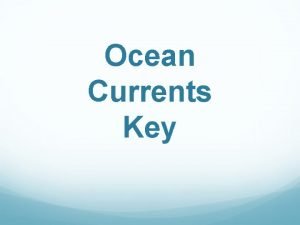Unit 3 Lesson 5 Ocean Currents Copyright Houghton
















- Slides: 16

Unit 3 Lesson 5 Ocean Currents Copyright © Houghton Mifflin Harcourt Publishing Company

Unit 3 Lesson 5 Ocean Currents Florida Benchmark • SC. 6. E. 7. 3 Describe how global patterns such as the jet stream and ocean currents influence local weather in measureable terms such as temperature, air pressure, wind direction and speed, and humidity and precipitation. Copyright © Houghton Mifflin Harcourt Publishing Company

Unit 3 Lesson 5 Ocean Currents Going with the Flow What are ocean currents? • Ocean currents are streamlike movements of water in the ocean. • Surface currents are ocean currents that occur at or near the surface of the ocean. • The Gulf Stream is a surface current. Copyright © Houghton Mifflin Harcourt Publishing Company

Unit 3 Lesson 5 Ocean Currents What affects surface currents? • Surface currents are affected by continental deflections, the Coriolis effect, and global winds. • When surface currents meet continents, they are deflected and change direction. • The deflection of moving objects from a straight path due to Earth’s rotation is the Coriolis effect. Copyright © Houghton Mifflin Harcourt Publishing Company

Unit 3 Lesson 5 Ocean Currents What affects surface currents? • How does a continent change surface currents on Earth? Could a small island change surface currents? Copyright © Houghton Mifflin Harcourt Publishing Company

Unit 3 Lesson 5 Ocean Currents What affects surface currents? • In the Northern Hemisphere, currents are deflected to the right. • In the Southern Hemisphere, currents are deflected to the left. • Global winds can push ocean water across Earth’s surface to create surface currents. Copyright © Houghton Mifflin Harcourt Publishing Company

Unit 3 Lesson 5 Ocean Currents What powers surface currents? • The major source of energy that powers surface currents is the sun. • The sun causes differences in temperature across Earth, which causes differences in air pressure. • Winds form as a result of differences in air pressure and create surface currents. Copyright © Houghton Mifflin Harcourt Publishing Company

Unit 3 Lesson 5 Ocean Currents Current Events How do deep currents form? • Deep currents are movements of ocean water below the surface caused by differences in density. • Density is the amount of matter in a given space or volume. • Salinity and temperature cause differing ocean water densities. Copyright © Houghton Mifflin Harcourt Publishing Company

Unit 3 Lesson 5 Ocean Currents How do deep currents form? • Salinity is a measure of the amount of dissolved salts or solids in a liquid. • Higher salinity makes water more dense. • Dense water sinks and can form deep water currents that flow along the ocean floor or on another layer of denser water. Copyright © Houghton Mifflin Harcourt Publishing Company

Unit 3 Lesson 5 Ocean Currents What are convection currents? • Convection currents in the ocean are the movement of water that results from density differences. • Convection currents can be vertical, circular, or cyclical. Copyright © Houghton Mifflin Harcourt Publishing Company

Unit 3 Lesson 5 Ocean Currents How do convection currents transfer energy? • Water at the ocean’s surface absorbs energy from the sun, which can be carried to colder regions. • As water reaches a colder region, it cools and sinks. • As warm water moves away, cold water can rise from the bottom of the ocean, and the cycle continues. Copyright © Houghton Mifflin Harcourt Publishing Company

Unit 3 Lesson 5 Ocean Currents That’s Swell What is upwelling? • Upwelling is the process in which winds blow warm water away from a shore, allowing cool, nutrient-rich water to rise to the surface. • Upwelling supplies the nutrients necessary for ocean life to grow. Copyright © Houghton Mifflin Harcourt Publishing Company

Unit 3 Lesson 5 Ocean Currents What is upwelling? • What would happen to ocean life if upwelling did not occur? Copyright © Houghton Mifflin Harcourt Publishing Company

Unit 3 Lesson 5 Ocean Currents Hitching a Ride • Ocean currents can carry life to other regions of Earth. • Turtles, coconuts, and phytoplankton all ride surface currents in the ocean. Copyright © Houghton Mifflin Harcourt Publishing Company

Unit 3 Lesson 5 Ocean Currents Traveling the World What do ocean currents transport? • Convection currents in the ocean transport energy in the form of heat. • Ocean currents can release energy into the atmosphere, making currents an important influence on climate. • Ocean water also transports solids, nutrients, and gases to new locations. Copyright © Houghton Mifflin Harcourt Publishing Company

Unit 3 Lesson 5 Ocean Currents What do ocean currents transport? • Trace a path on the map to show nutrients are transported around Earth. Copyright © Houghton Mifflin Harcourt Publishing Company
 Copyright houghton mifflin company
Copyright houghton mifflin company Copyright houghton mifflin company
Copyright houghton mifflin company Copyright houghton mifflin company
Copyright houghton mifflin company Copyright houghton mifflin company
Copyright houghton mifflin company Copyright houghton mifflin company
Copyright houghton mifflin company What is a deep current
What is a deep current Citlalli dominguez
Citlalli dominguez Current
Current Currents definition
Currents definition Convection currents in the ocean
Convection currents in the ocean What impact does the ocean have on climate brainpop
What impact does the ocean have on climate brainpop Ocean currents
Ocean currents Ocean currents vocabulary
Ocean currents vocabulary Ocean currents
Ocean currents Cenozoic mammals
Cenozoic mammals What causes convection current
What causes convection current What is the primary driving force behind surface currents?
What is the primary driving force behind surface currents?
